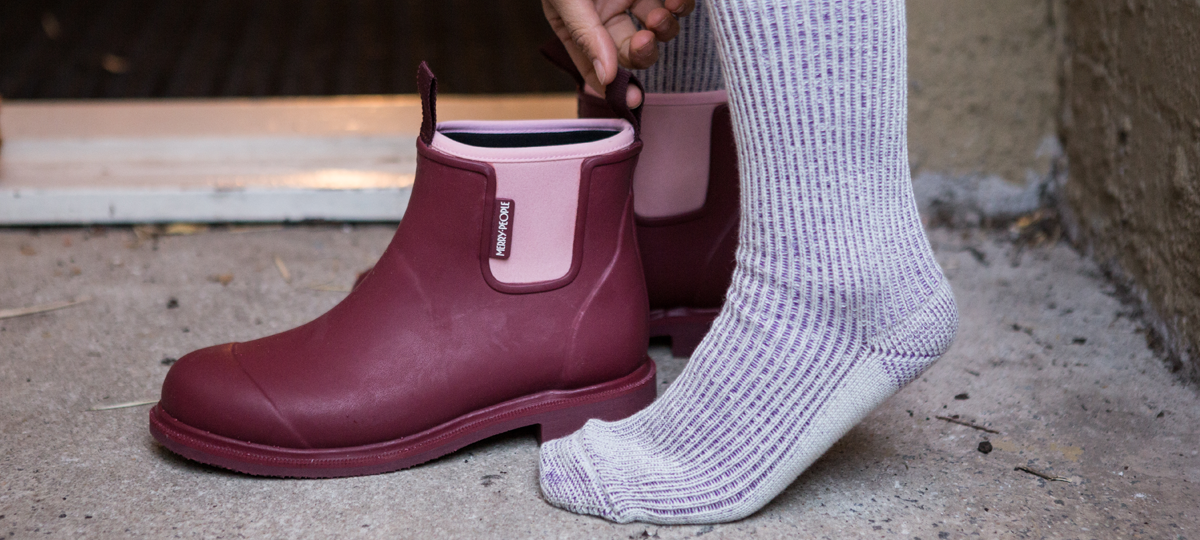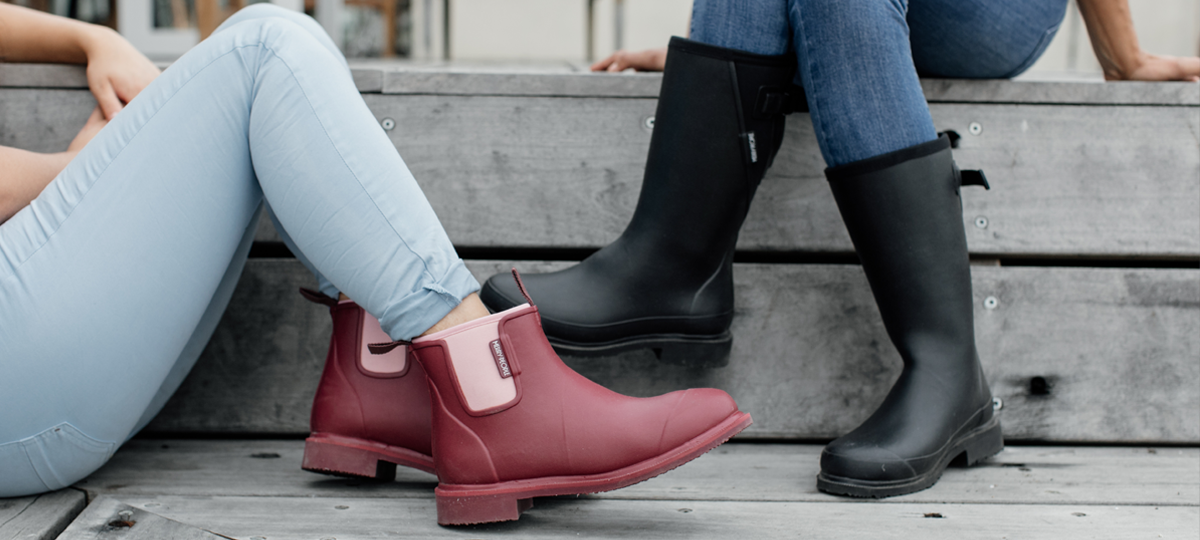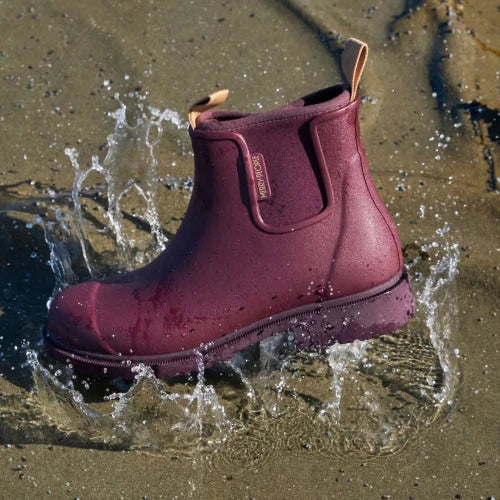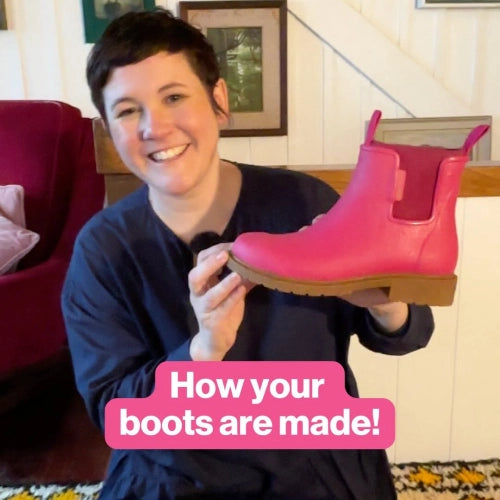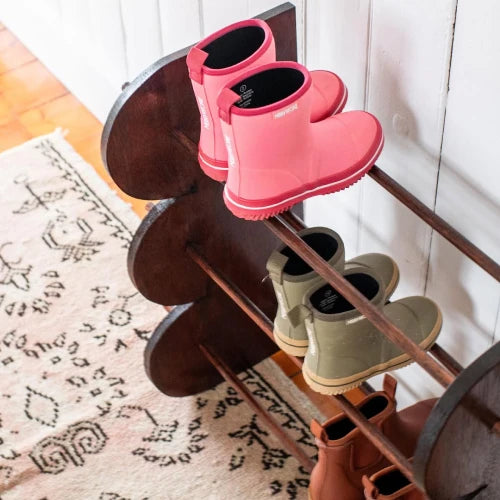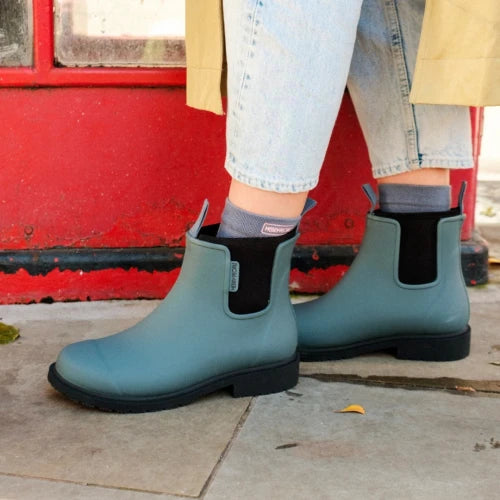Wellies (Wellington Boots) were first created in the 1800s after the Duke of Wellington asked his shoemaker to create a pair of waterproof boots that were easier to wear in battle. Since then, they have been adapted to the times, but still have the same functionality as when they were first invented.
Once reserved for the aristocracy, they are now regularly used by people who love the great outdoors. One important aspect for all those wearing wellies is the fit. They need to have enough room for the addition of socks, but not be so big that your feet slip out of them.
Here is our guide to fitting your wellies, along with the different types you can choose from.
Types Of Wellington Boot
Nowadays, many people wear wellies regularly, from those who love a nice walk in the countryside, to individuals who work outdoors for a living. Good quality Wellies use materials like rubber and neoprene, so they can withstand the worst types of weather and easily deal with trekking through mud or marshes.
Wellies have evolved to include different types of boots in all sorts of colours from red to black and depending on what activities you will be doing. Here are some examples of the varieties of rain boots:
- Everyday Use - These wellies are designed to give you a nice amount of comfort, along with a waterproof design that is perfect for use every day. They are best suited to people who enjoy spending extended amounts of time outdoors, particularly in wet climates.
- Working Use - People who work in agriculture or industrial jobs will require a particularly tough wellie that can withstand high levels of abuse and still be safe. In those instances, you can look for specially designed “working wellies”, that will keep your feet well protected.
- Casual Wellie - Wellies have become much more of a fashion statement than ever before. These boots are usually brightly coloured, with red, yellow, or even multi-coloured variations. Casual wellies are typically intended to be used around the city or town, and can work well during a light rain, but aren’t meant to be worn when hiking or venturing further outdoors.
How To Ensure A Comfortable Fit
So, how should wellies fit? Wearing wellies is as much about comfort as any other footwear. You could potentially be wearing them for several hours, so you don’t want them to be cramping your toes or feeling so loose that they create blisters. Therefore, when you are selecting a pair of boots, you need to ensure that they are the perfect fit.
Here are some of the ways you can select the right size for your feet:
Shoe Size
When selecting the size of your boots, you can usually use the same size as you would for other types of shoes. However, this does depend on when and where the boots will be used.
If you are planning on wearing your boots on the ice or snow, you will likely be wearing thick socks as well. And while many places may recommend sizing up to accommodate for thicker socks, here at Merry People, we recommend always shopping true to your normal shoe size, and even sizing down for half sizes.
You want to have some room at the front of the boot for your toes to move, and a slight movement at the heel. If the boot feels like it might slip off, then it is too big.
Adjustable Wellies
One area that can be problematic when choosing a boot is getting the calf sizing right. If you have a wide calf, then there is a chance the top of the wellie won’t fit well, due to being too tight. However, there are styles of boot that can help with this.
Many boots now offer an adjustable gusset strap at the top. This can be loosened or tightened to fit you correctly. This can also be handy when you start to wear thick socks in the winter, as you ideally want them to be longer than the boot for comfort but also tighten up to keep out the cold.
Specialized boot makers will have all types of boots that are designed for comfort. Meaning they will often be the best option for fighting the right boot to fit your needs.
Staying Warm in Winter
If you intend to wear your wellies in the ice and snow, it is important that you wear thick socks as well. Unlike snow boots, wellies typically don’t have a warm inner lining, so you risk getting frozen feet and toes.
That’s why we’d recommend finding a few nice pairs of wool socks. These will still keep your feet warm even if they are wet. Avoid using cotton socks as they don’t hold in heat well, especially when faced with snow and rain and can lead to freezing toes if they get wet.
Conclusion
Wellington boots are a versatile boot that is as much a fashion symbol, as it is practical. Once you find the perfect fit, you’ll have yourself a pair of boots to last you for many years to come!


